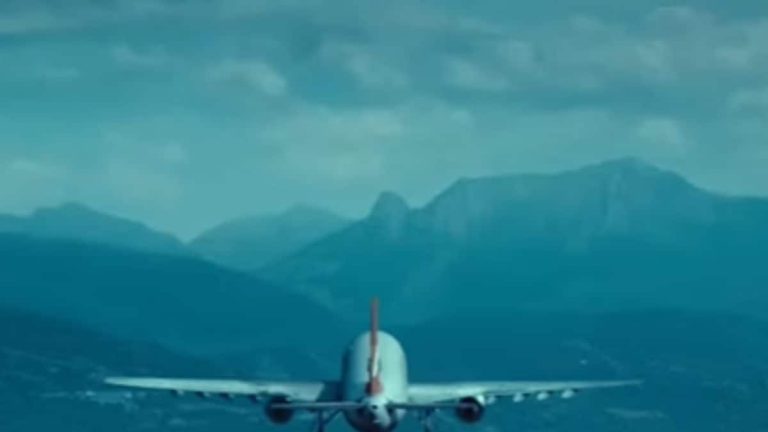Netflix's multi-star series “IC 814: The Kandahar Hijacking” caused a nationwide stir by recreating the 1999 terrorist hijacking of an Air India flight and reignited discussions about the incident some 25 years ago. Now, edited excerpts from former top police officer D Sivanandhan's upcoming book Brahmastra, published in The Indian Express, reveal shocking details of how the Mumbai police solved the hijacking case.
On December 24, 1999, five masked men hijacked IC 814, which flew to New Delhi 40 minutes after taking off from Tribhuvan International Airport in Kathmandu. The hijackers forced the captain, Devi Sharan, to fly the plane into Pakistani airspace, but he did not receive permission to land. The plane then landed in Amritsar with only 10 minutes of fuel remaining.
After the plane was refueled, the hijackers forced the pilot to fly the plane to Lahore. Although he did not get permission from the Pakistani air traffic control department, the pilot made a desperate landing. The air traffic control department turned off all lights and navigation equipment at the airport.
But at the last minute, they got permission and refueled here and headed to Dubai. The flight landed at Al Minhad Air Base in the United Arab Emirates after being denied permission. The hijackers released 27 of the 176 passengers on board, including the body of 25-year-old Rupin Katyal, who was stabbed to death by the hijackers.
After that, the plane finally landed at the hijackers' original destination, the Taliban-controlled Kandahar Airport in Afghanistan. It was here that negotiations between the hijackers and the then Atal Bihari Vajpayee government ended on December 30 with the release of three terrorists – Ahmed Omar Saeed Sheikh, Masoud Azhar and Mushtaq Ahmed Zargar – all hostages.
According to Sivanandhan, 26/11 hero Hemant Karkare, then working in the Mumbai office of the research and analysis unit, informed him the day after the hijacking (December 25) that RAW had obtained a phone number in Mumbai. Stay in touch with some people in Pakistan. He gave the number to Sivanandan, who was then joint commissioner of Mumbai police and head of the elite crime branch.
After days of painstaking investigation, Sivanandan and his men got a breakthrough when a caller from Mumbai called his agent in Pakistan and told him he was low on cash and needed money urgently. The person on the other end of the phone asked him to wait for 30 minutes and he would make arrangements to call back.
The next call the surveillance team received was from a Jaish-e-Mohammed (JeM) terrorist informing his colleagues in Mumbai that they had successfully arranged for Rs 1 lakh to be delivered through hawala transactions. The man in Mumbai was directed to collect the money from Shalimar Hotel on Mohammad Ali Road in south Mumbai around 10 pm. He was also told that a man wearing blue jeans and a striped shirt would meet him at the hotel and hand him money.
Crime branch officers in plainclothes went to the hotel, spotted the man who had taken the money and followed him back to a small hotel in the Basheer Bagh slum of Jogeshwari. After two days of vigil by plainclothes detectives, Mumbai police's trained commandos and senior officers from the crime branch burst into the room, with Sivanandan overseeing the operation.
A total of five terrorists were arrested. A large number of weapons and ammunition including two AK-56 assault rifles, five hand grenades, anti-tank TNT rocket launcher, artillery shells, three detonators and explosives, six pistols, large quantity of ammunition and cash of Rs 172,000 were seized from the room. Terrorists appear to be planning a major terror attack in Mumbai. A map of Matoshree was also found in the room. Matoshree is the residence of late Shiv Sena chief Balasaheb Thackeray. Even today, it remains the residence of Shiv Sena (UBT) chief Uddhav Balasaheb Thackeray.
Simultaneous raids were also conducted at two other places in Jogeshwari and Malad. In one of the raids, an apartment rented by a Nepali couple was raided and live grenades, 2-3 Glock pistols and $10,000 in cash were seized.
Upon interrogation, the terrorists confessed to the entire hijacking and how they were involved in it. They also revealed that three other Pakistani nationals were staying in the same room with them in Jogeshwari. The three men were out during the raid and were not arrested. Despite the best efforts of the Mumbai police, they managed to escape.
After sustained interrogation, it was discovered that the entire team, including the hijackers, had been hiding in Mumbai since July 1999 in preparation for the hijacking. The hijackers were identified as Ibrahim Athar from Bahawalpur, Pakistan; Shahid Akhtar from Karachi, Pakistan; Sunny Ahmed Qazi from Karachi, Pakistan; Mistri Zahoor Ibrahim from Karachi, Pakistan; and Shakir from Pakistan. Sindh.
Finding the true name and identity of the hijackers in Kandahar, Afghanistan, is a major breakthrough. Until now, the hijackers had remained unknown, wearing monkey hats inside the plane to hide their identities and faces. Mumbai police were the first to reveal the true identity and real name of the hijackers to the world. Kakare was reporting all developments in Mumbai to his superiors in Delhi and immediately conveyed the names and identities of the hijackers to his superiors, who in turn briefed the then Deputy Prime Minister of India, LK. After the news broke, the Indian government and the world knew the true identity of the hijackers.
